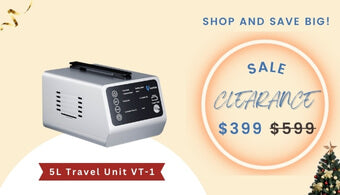Living with asthma and allergies requires proactive strategies to reduce symptoms, improve breathing, and enjoy daily life with greater ease. These conditions can be triggered by environmental factors, allergens, or even weather changes, making it essential to manage your respiratory health carefully. One of the most effective tools in this effort is having access to trusted oxygen solutions, including oxygen concentrators available from Oxygenvip.
This guide outlines best practices for everyday life—from avoiding allergens to choosing the right respiratory support—so you can breathe easier every day.
Identifying Triggers
Understanding what triggers your asthma and allergies is the first step in effective management. Common culprits include:

-
Pollen and seasonal changes
-
Pet dander and dust mites
-
Mold, smoke, or air pollution
-
Cold air or strong fragrances
-
Physical exertion or stress
Each person’s triggers vary, so tracking when your symptoms worsen can help you avoid specific allergens and plan interventions, such as medications or oxygen solutions, when needed.
Avoiding Allergens
Once your triggers are identified, the next step is prevention. Limiting exposure to allergens can significantly reduce the frequency and severity of asthma attacks or allergy flare-ups.

Best practices include:
-
Using air purifiers with HEPA filters
-
Keeping windows closed during high pollen counts
-
Regularly cleaning and vacuuming indoor spaces
-
Using hypoallergenic bedding
-
Avoiding smoking or strong chemical scents
For severe cases, portable oxygen solutions can serve as a reliable backup when triggers cannot be avoided, helping you maintain stable oxygen levels.
Tracking Symptoms
Monitoring symptoms is a cornerstone of managing asthma and allergies. Whether you're using a peak flow meter, a digital health tracker, or logging symptoms in a journal, tracking can help you detect patterns and take preemptive action.

Watch for:
-
Increased coughing or wheezing
-
Shortness of breath or tight chest
-
Fatigue or low energy
-
Frequent use of rescue inhalers
In cases where symptoms worsen despite avoidance and medication, oxygen solutions like home and portable oxygen concentrators from Oxygenvip can offer critical respiratory support.
Asthma Action Plan
Every person with asthma and allergies should work with their healthcare provider to develop a personalized asthma action plan. This plan should clearly outline:
-
Daily medication routines
-
Emergency contact information
-
Guidelines for using rescue inhalers
-
Steps to take during a respiratory emergency
-
When and how to use oxygen solutions if needed
Having this plan in place helps you and your loved ones act quickly and appropriately during an episode.
Quick-Acting Medications
Rescue medications such as short-acting beta-agonists (e.g., albuterol) are designed to provide immediate relief during asthma attacks. These are essential for:
-
Opening airways quickly
-
Reducing bronchospasm
-
Managing sudden-onset allergic reactions
In more severe attacks, when oxygen levels drop, immediate use of oxygen solutions—especially a portable oxygen concentrator—can be life-saving. Devices from Oxygenvip are compact, fast-acting, and perfect for emergency use at home or on the go.
Long-Acting Medications
Long-term control medications are crucial for reducing inflammation and preventing symptoms. These include:
-
Inhaled corticosteroids
-
Long-acting beta-agonists
-
Leukotriene modifiers
-
Biologic therapies for chronic allergic asthma
When used consistently, they help reduce reliance on quick-relief meds. Pairing long-term treatments with access to oxygen solutions ensures a more comprehensive respiratory care routine, especially for those managing moderate to severe asthma.
First Aid for Asthma and Allergy Emergencies
Emergency readiness is critical for those living with respiratory issues. Here’s how to respond in crisis situations:

Asthma Attack First Aid:
-
Stay calm and help the person sit upright.
-
Use a rescue inhaler immediately (spacer optional).
-
If symptoms persist after 2–3 puffs, repeat after 20 minutes.
-
Use portable oxygen solutions to stabilize breathing, if available.
-
Call emergency services if there's no improvement.
Severe Allergic Reaction (Anaphylaxis):
-
Administer an epinephrine auto-injector immediately.
-
Lay the person flat with legs raised (unless breathing is difficult).
-
Use oxygen concentrators to support breathing until help arrives.
-
Seek emergency medical attention right away.
Having access to home and portable oxygen concentrators from Oxygenvip ensures you're prepared when seconds count.
Oxygen Solutions: Home and Portable Oxygen Concentrators from Oxygenvip
At Oxygenvip, we provide advanced oxygen solutions tailored for individuals managing asthma and allergies. Our selection of oxygen concentrators is designed to improve quality of life by providing consistent and reliable oxygen support.
Available Options Include:
-
Ideal for continuous oxygen therapy
-
High flow capacity for long-term support
-
Quiet, energy-efficient, and easy to use
-
Suitable for daily use in your living space
-
Lightweight and travel-friendly
-
Battery-powered options for outdoor activities or travel
-
Easy to carry in bags or shoulder straps
-
Instant access to oxygen when symptoms flare up
Our oxygen solutions are the most economical oxygen machine, user-friendly, and available for fast shipping. Whether you need respiratory support at home or on the move, Oxygenvip ensures you stay equipped and protected—every breath of the way.
Takeaway
Managing asthma and allergies is about staying one step ahead—by understanding your triggers, taking medications as prescribed, and having access to professional oxygen solutions. Whether you're responding to an acute episode or looking for long-term relief, having a personalized plan and reliable oxygen concentrators from Oxygenvip can make all the difference.
Breathe easier. Live better. Choose Oxygenvip for the best in home and portable oxygen solutions tailored to your lifestyle.
Explore top-rated oxygen concentrators now at Oxygenvip and take control of your asthma and allergy care with confidence.


















